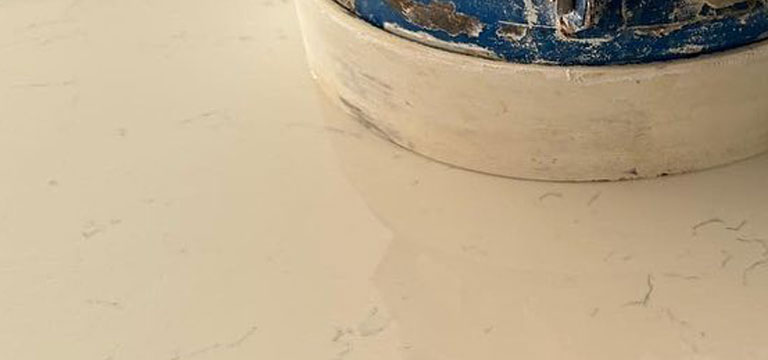Marble’s effortless elegance and durability make it the natural design choice for kitchens and bathrooms. After all, it adds a touch of luxury few other materials can match. Each piece of this stone is unique, so marble is always a sound investment. And the good news is that it doesn’t require too much in the way of ongoing maintenance. (Although it is porous and so you’ll need to seal it to prevent scratches and stains.) Equally, it’s far easier to clean than you may have realised. However, in common with other materials, limescale can build up on marble. So, to keep enjoying your stone, it’s worth understanding how this issue arises, and what you can do about it.
Limescale: what is it?
This crusty white deposit comprises magnesium and calcium carbonate. Its formation follows the evaporation of hard water on marble surfaces, leaving behind mineral deposits which can take the shine off the stone. Substances including chrome and granite are among other things which can also be prone to this problem. However, you’ll need different techniques to shift this stuff from different materials.
How does it build up?
Limestone accumulates over time. Whenever hard water evaporates from your stone, there will be greater mineral concentration as the liquid vanishes, leaving magnesium and calcium deposits in its wake. This results in limescale build-up over time. And it can be particularly noticeable in areas around taps and in basins. It can occur simply because you’re busy, or you may move into a place where this has happened, so you inherit the problem.
The removal process
The good news is that you don’t have to be an expert to tackle limescale build-up on marble. Just grab a soft, non-abrasive cleaning cloth, a water-filled spray bottle and a pH-neutral stone cleaner, ideally a product that’s specially formulated for marble. Complete your kit with a brush with soft bristles – a toothbrush will do. For larger areas, use a squeegee.
Do your prep
Wipe down your marble surface using a damp cloth to shift any superficial dust or dirt, so the cleaning solution sinks into the limescale as deeply as possible.
Check how bad the limescale is. Can you just wipe it away? More stubborn deposits will need a more determined effort with a gentle scrub plus your cleaning solution.
Cleanse
Follow these simple steps:
- Apply your cleaning solution. Spray your solution on to the limescale. Remember not to use abrasive chemicals or scrubbers.
- Leave to act. Allow to sink in for a few minutes so it loosens the limescale.
- Scrub gently. Once that’s done, you can take a soft brush and gently rub the deposits in a circular motion to shift the build-up. Repeat the process afterwards if the limescale proves particularly stubborn.
- Use your squeegee to get rid of the cleaner and mineral deposits and prevent streaking while also ensuring you don’t leave any residue behind. This eliminates any leftover cleaner or loosened limescale so your marble sparkles.
- Dry thoroughly. Buff with a dry, clean cloth to stop water spots from forming and keep your stone looking as good as new.
Daily wiping and weekly deep cleans will help. Additionally, a more intense treatment every few months with a soft-bristled brush or toothbrush will refresh the protection of the sealant and clean hard-to-reach spots.
How we can help
If you’ve got a particularly stubborn limescale issue, we understand if you don’t want to tackle this problem yourself. At Royal Stone Care, we specialise in marble stone restoration and repair in London for businesses and homes. We suggest if you talk to us before you take any considerable approach.

